Flocculation and Settlement Characteristics of Ultrafine Tailings and Microscopic Characteristics of Flocs
Abstract
:1. Introduction
2. Materials and Methods
2.1. Physical and Chemical Properties of Ultrafine Tailings
2.2. Flocculant Parameters
2.3. Experimental Program and Process
2.4. Nuclear Magnetic Resonance (NMR) Analysis Experiment
2.5. Micro-Electron Microscope Scanning Experiment (SEM)
3. Results and Discussion
3.1. Flocculation Sedimentation Characteristics of Ultrafine Tailings
3.1.1. Analysis of the Influence of the Flocculant Type on the Settlement Effect
3.1.2. Analysis of the Influence of the Flocculant Unit Consumption on the Settlement Effect
3.1.3. Analysis of the Influence of Flocculant Concentration on the Sedimentation Effect
3.1.4. Analysis of the Influence of Flocculant Stirring Time on the Settlement Effect of Ultrafine Tailings
3.2. Microscopic Characteristics of Floc Structure of Ultrafine Tailings
3.2.1. Analysis of Pore Distribution Characteristics of Ultrafine Tailing Flocculent Solution
3.2.2. Fractal Characteristics of Floc Structure of Ultrafine Tailings
3.3. Microscopic Characteristics of Floc Structure of Ultrafine Tailings
3.3.1. Analysis of the Particle and Morphological Characteristics of Tailings Floccules
3.3.2. Analysis of Gray-Scale Characteristics of Ultrafine Tailing Floc Structure
3.3.3. Analysis of the Spatial Morphology of the Ultrafine Tailings Floc Structure
4. Conclusions
Author Contributions
Funding
Informed Consent Statement
Data Availability Statement
Acknowledgments
Conflicts of Interest
References
- Yao, H.H.; Cai, L.B.; Liu, W.; Tan, W.Q.; Jiao, F.; Yang, R.C. Status quo and development of comprehensive utilization of waste rock from metal mines in my country. Chin. J. Nonferrous Met. 2021, 31, 1649–1660. [Google Scholar]
- Yang, Z.L.; Tan, Y.Y.; Fu, J.X.; Zhen, D.; Wang, Y. Selection of Optimal Flocculant for whole tailings and Floc NMR Analysis. Min. Res. Dev. 2021, 41, 136–140. [Google Scholar]
- Shui, C.; Wang, X.J.; Wang, X.M.; Zen, Q.; Wang, H.; Liu, J. Study on the law and mechanism of APAM unit consumption on the flocculation of particles of different sizes in the flocculation and settlement of whole tailings. Min. Res. Dev. 2020, 40, 67–73. [Google Scholar]
- Du, J.F.; Hou, C.; Zhu, Z.W.; Liu, H.L.; Liu, X.G.; Wang, J.S. Tailings flocculation settlement test and its engineering application. Met. Mine 2020, 1, 95–100. [Google Scholar]
- Wu, A.X.; Wang, Y.; Wang, H.J. Current status and trend of paste filling technology. Metal Mine 2016, 7, 1–9. [Google Scholar]
- Shi, C.X.; Guo, L.J.; Chen, X. Static and dynamic flocculation settlement characteristics of tailings. Chin. J. Nonferrous Met. 2021, 31, 194–202. [Google Scholar]
- Li, X.; Guo, L.J.; Yang, C. Experimental study on flocculation and settlement of whole tailings in a gold mine in anhui. China Min. Mag. 2017, 26, 326–329. [Google Scholar]
- Guo, J.B.; Wang, H.J.; Tian, Z.G.; Du, X.H. The influence of different types of flocculants on the density of ultrafine tailings. Min. Res. Dev. 2021, 41, 141–145. [Google Scholar]
- Jiao, H.Z.; Wu, A.X.; Wang, H.J.; Liu, X.H.; Yang, S.K.; Xiao, Y.T. Experimental study on flocculation and settlement characteristics of whole tailings. J. Univ. Sci. Technol. Beijing 2011, 33, 1437–1441. [Google Scholar]
- Yang, L.H.; Wang, H.J.; Wu, A.X.; Li, H.; Hui, H.; Hui, C.Y. The effect of flocculation settlement on the rheological properties of whole tailings slurry. J. Cent. South Univ. (Sci. Technol.) 2016, 47, 3523–3529. [Google Scholar]
- Li, J.X.; Shun, W.; Zhang, S.Y.; Liu, W.D. Factors Influencing Flocculation and Sedimentation of Tailings. J. Kunming Univ. Sci. Technol. (Sci. Technol.) 2021, 46, 45–53. [Google Scholar]
- Xue, Z.L.; Yan, Z.P.; Jiao, H.Z.; Gan, Q.D.; Zhang, Y.Z.; Liu, Z.Y. Dynamic settlement of flocs in the deep cone thickening process of tailings. Chin. J. Nonferrous Met. 2020, 30, 2206–2215. [Google Scholar]
- Wu, A.X.; Zhou, L.; Yin, S.H. Influencing factors of flocculation and settlement of whole tailings. Chin. J. Nonferrous Met. 2016, 26, 439–445. [Google Scholar]
- Gheshlaghi, M.E.; Goharrizi, A.S.; Shanhrivar, A.A. Modelingindustrial thickener using computational fluid dynamics (CFD), acase study: Tailing thickener in the Sarcheshmeh copper mine. Int. J. Min. Sci. Technol. 2013, 23, 885–893. [Google Scholar] [CrossRef]
- Ruan, Z.E.; Li, C.P.; Shi, C. Numerical simulation of flocculation andsettling behavior of whole-tailings particles in deep-conethickener. Int. J. Cent. South Univ. 2016, 23, 740–746. [Google Scholar] [CrossRef]
- Hou, H.Z.; Li, C.P.; Wang, S.Y. Settlement velocity change and particle settling characteristics of thick and middle mud layer in tailings. J. Cent. South Univ. (Sci. Technol.) 2019, 50, 1428–1436. [Google Scholar]
- Chen, Y.P.; Luo, W.; Xu, C.Y. Microstructure of high-concentration viscous sediment flocs and its effect on settlement characteristics. J. Sediment Res. 2020, 45, 8–14. [Google Scholar]
- Ying, Y.; Wu, A.X.; Wang, H.J. Torque mechanics model and mechanism analysis of rake frame based on mud height. J. Cent. South Univ. (Sci. Technol.) 2019, 50, 165–171. [Google Scholar]
- Hu, J.H.; Ren, Q.F.; Yang, D.J. Cross-scale characteristics of backfill material using NMR and fractal theory. Trans. Nonferrous Met. Soc. China 2020, 30, 1347–1363. [Google Scholar] [CrossRef]
- Chen, D.; Song, W.D.; Wu, S. Experimental study on flocculation and settlement characteristics of tailings slurry. Non-Ferr. Met. (Min. Part) 2016, 68, 41–44. [Google Scholar]
- Dwari, R.K.; Angadi, S.I.; Tripathy, S.K. Studies onflocculation characteristics of chromite’s ore process tailing: Effect of flocculants ionicity and molecular mass. Colloids Surf. A Physicochem. Eng. Asp. 2018, 53, 467–477. [Google Scholar] [CrossRef]
- Su, S.L.; Rao, Q.H.; He, Y.H. Effects of porosity on tensile mechanical properties of porous FeAl intermetallics. Trans. Nonferrous Met. Soc. China 2020, 30, 2757–2763. [Google Scholar] [CrossRef]
- Zhao, J.; Fu, X.H.; Wang, J. Analysis of the effect of shear field on ultra-clean coal separation based on fractal dimension. J. China Coal Soc. 2016, 41, 2078–2085. [Google Scholar]
- Zhou, X.; Wu, A.X.; Wang, H.J. The Evolution Law of Flocculation in the Thickening Process of Tailings Based on FBRM. J. Eng. Sci. 2021, 43, 1425–1432. [Google Scholar]
- Zheng, D.; Song, W.D.; Tan, Y.Y. Research on fractal and microscopic quantitative characterization of unclassified tailings flocs. Int. J. Miner. Metall. Mater. 2021, 28, 1429–1439. [Google Scholar] [CrossRef]
- Hu, W.W.; Zhou, R.G.; Fan, P. Quantum Image Edge Detection Based on Canny Algorithm. J. Zhengzhou Univ. (Nat. Sci. Ed.) 2020, 52, 37–52. [Google Scholar]
- Li, J.; Chen, G.F.; Ding, X.Q. Research on Image Edge Detection Method Based on Improved Canny Algorithm. Comput. Simul. 2021, 38, 371–375. [Google Scholar]
- Li, J.; Li, H.Y.; Yao, R.J. Check of MR image edge information of lumber intervertebral disc using an improved Canny algorithm. J. Jilin Univ. (Eng. Technol. Ed.) 2016, 46, 1704–1709. [Google Scholar]
- Zhang, H.H.; Zhao, N.L.; Chao, Q. Influences of CO2 on the Microstructure in Sheared Olivine Aggregates. Minerals 2021, 11, 493. [Google Scholar] [CrossRef]
- Cai, G.P.; Wang, L.; Luo, X.Y. Multi-threshold Binary Algorithm for Ore Image Based on Block Processing. Min. Res. Dev. 2020, 40, 153–157. [Google Scholar]
- Xu, H.K.; Han, X.; Qu, H.J. Image gray scale transformation combining false edge extraction and histogram analysis. Opt. Precis. Eng. 2017, 25, 538–544. [Google Scholar]
- Sun, F.; Wang, F.Y.; Jiang, H.L. Analysis on the flocculation characteristics of algal organic matters. J. Environ. Manag. 2022, 302, 114094. [Google Scholar] [CrossRef] [PubMed]
- Rosa, M.F.L.; Francisco, D.P.V.F.A. Characterization and concentration by selective flocculation/magnetic separation of iron ore slimes from a dam of Quadrilátero Ferrífero—Brazil. J. Mater. Res. Technol. 2020, 9, 2021–2027. [Google Scholar] [CrossRef]
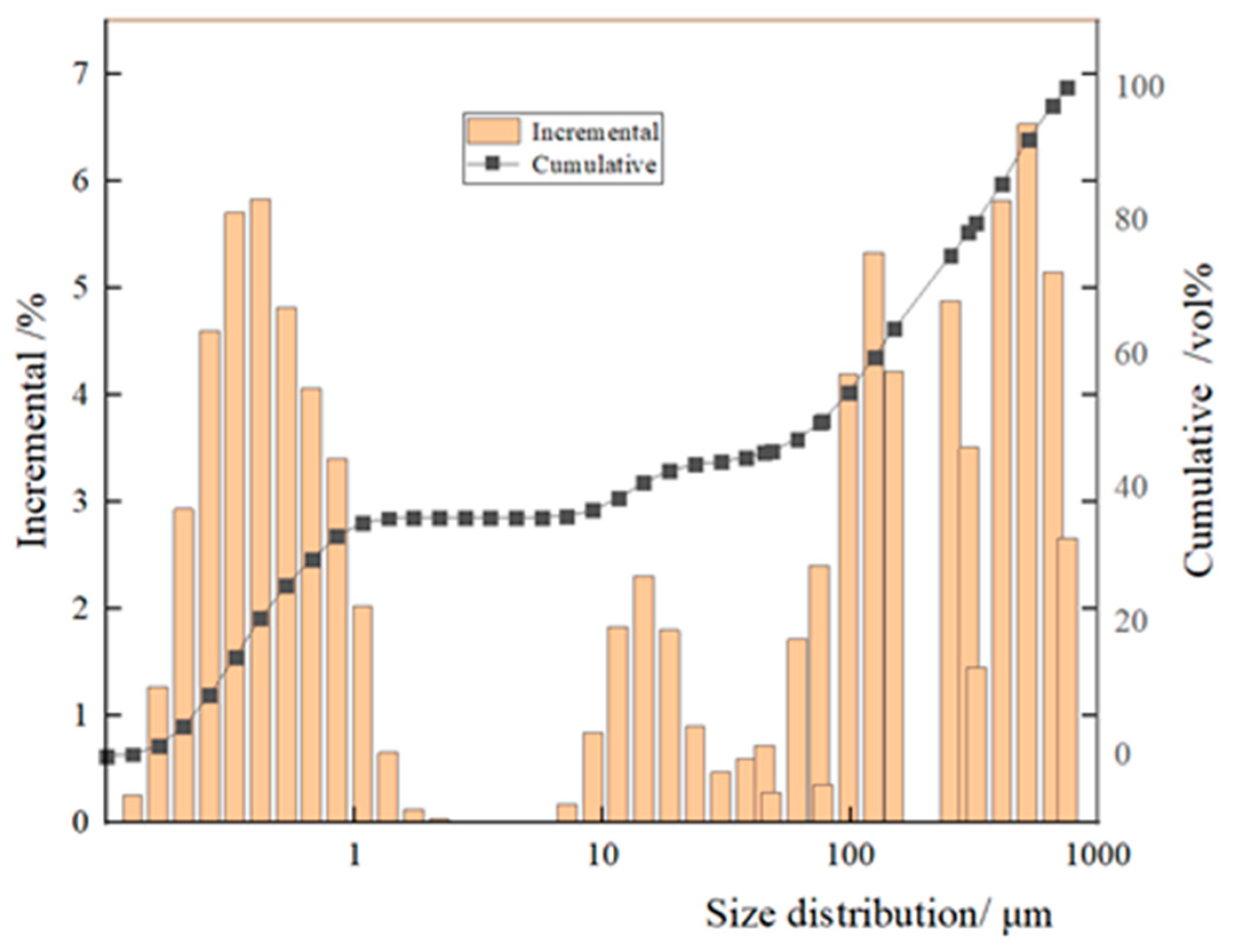

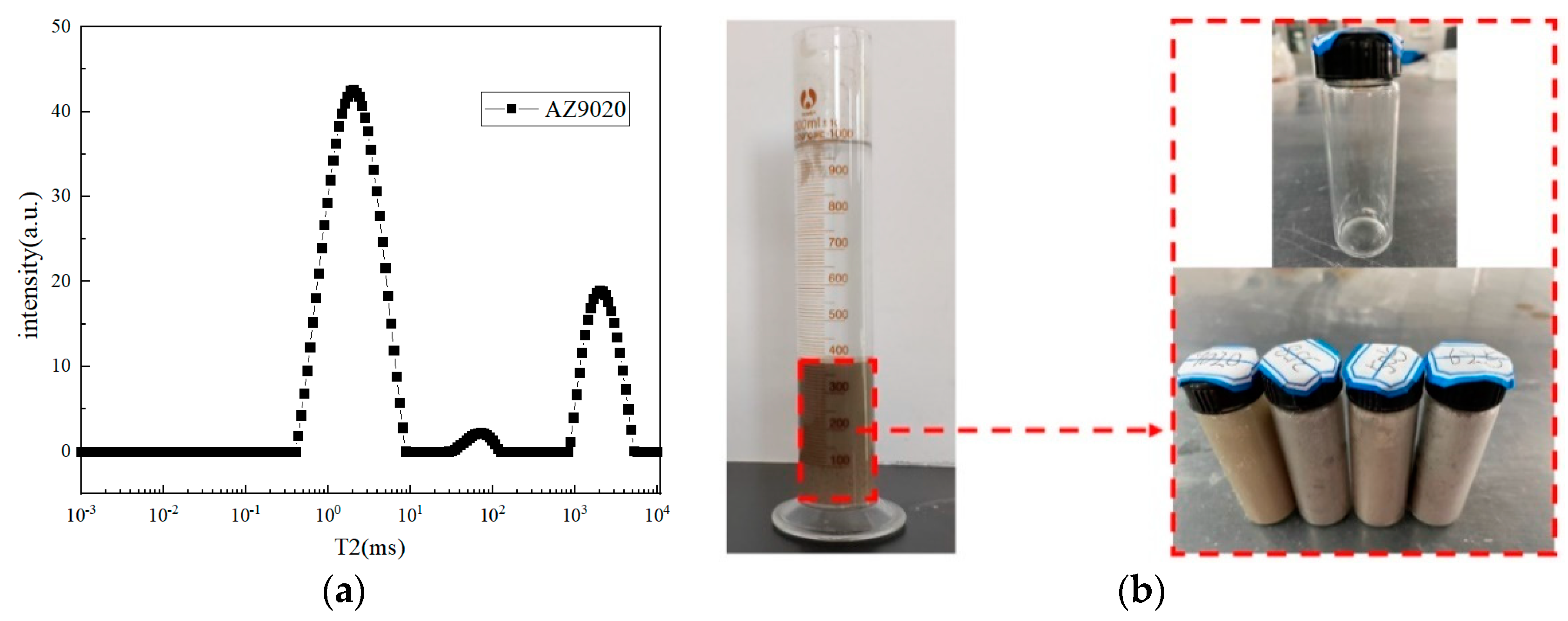


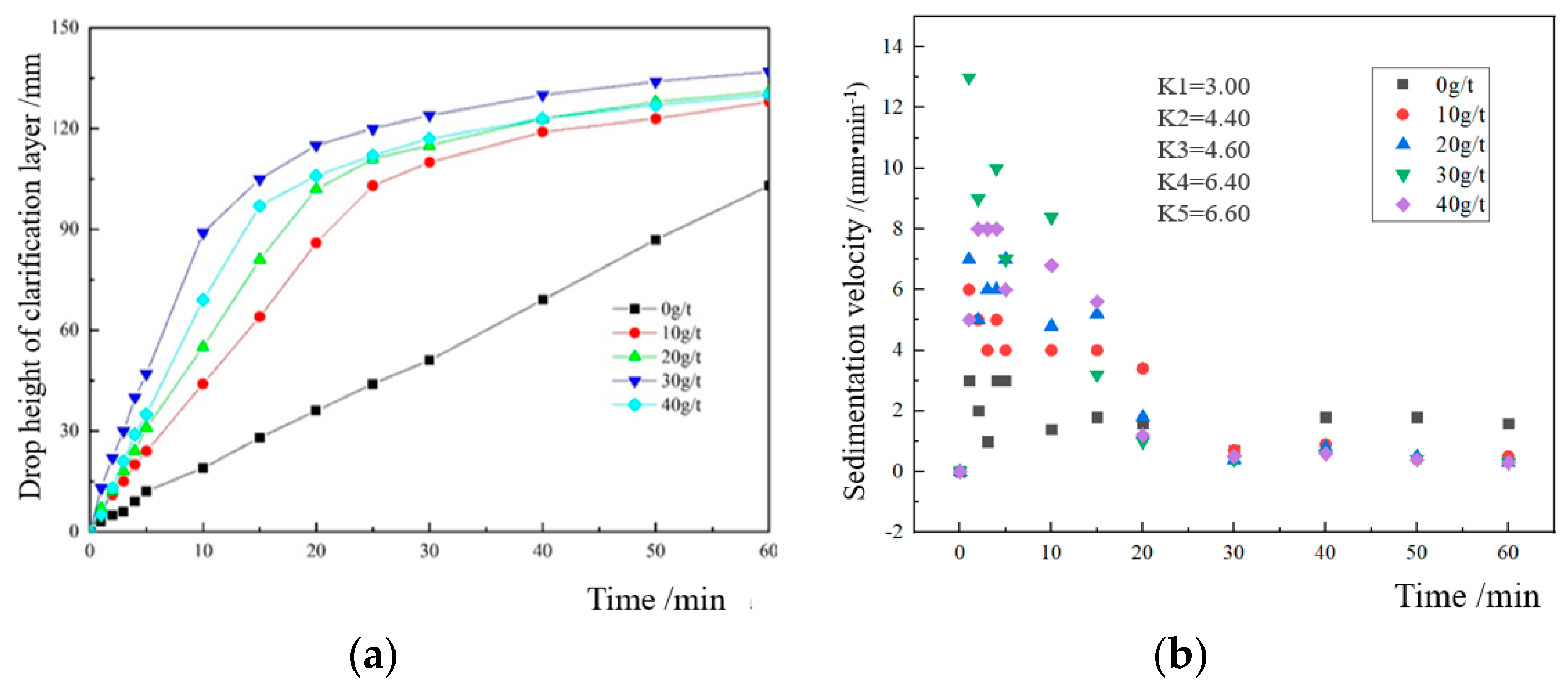
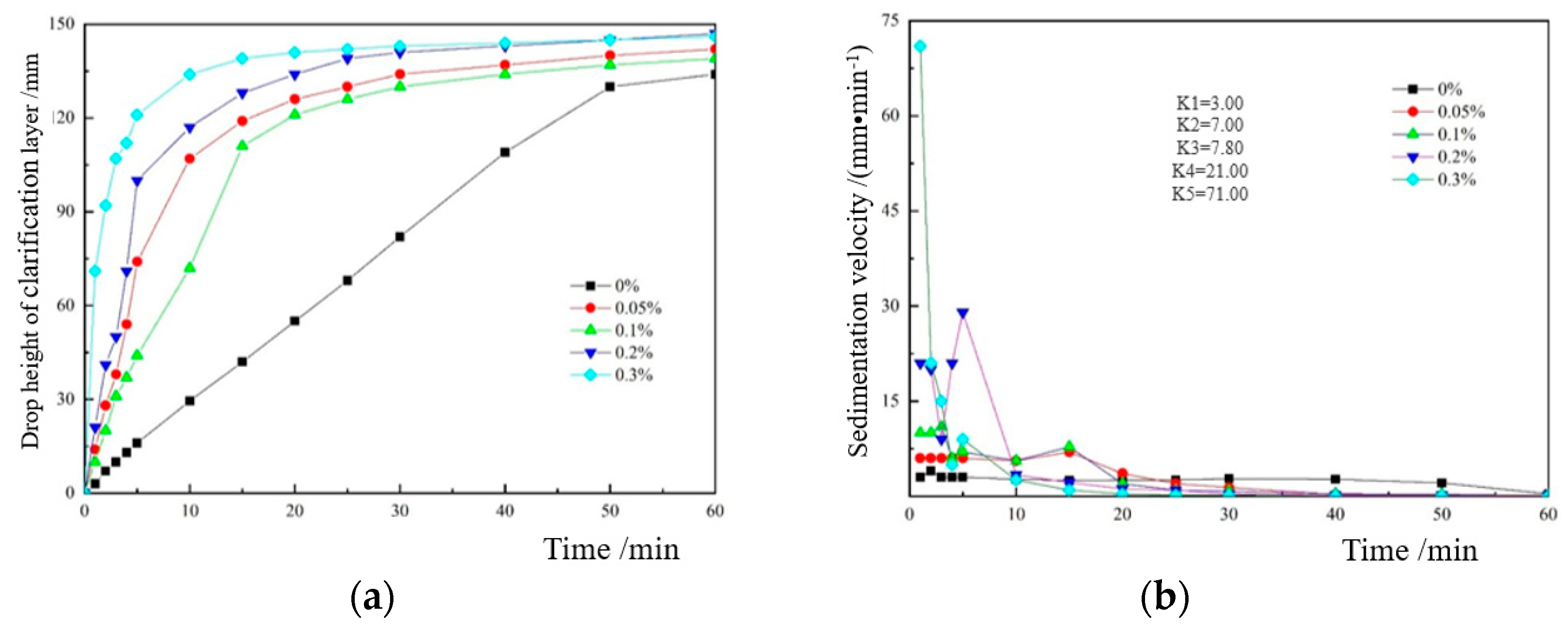
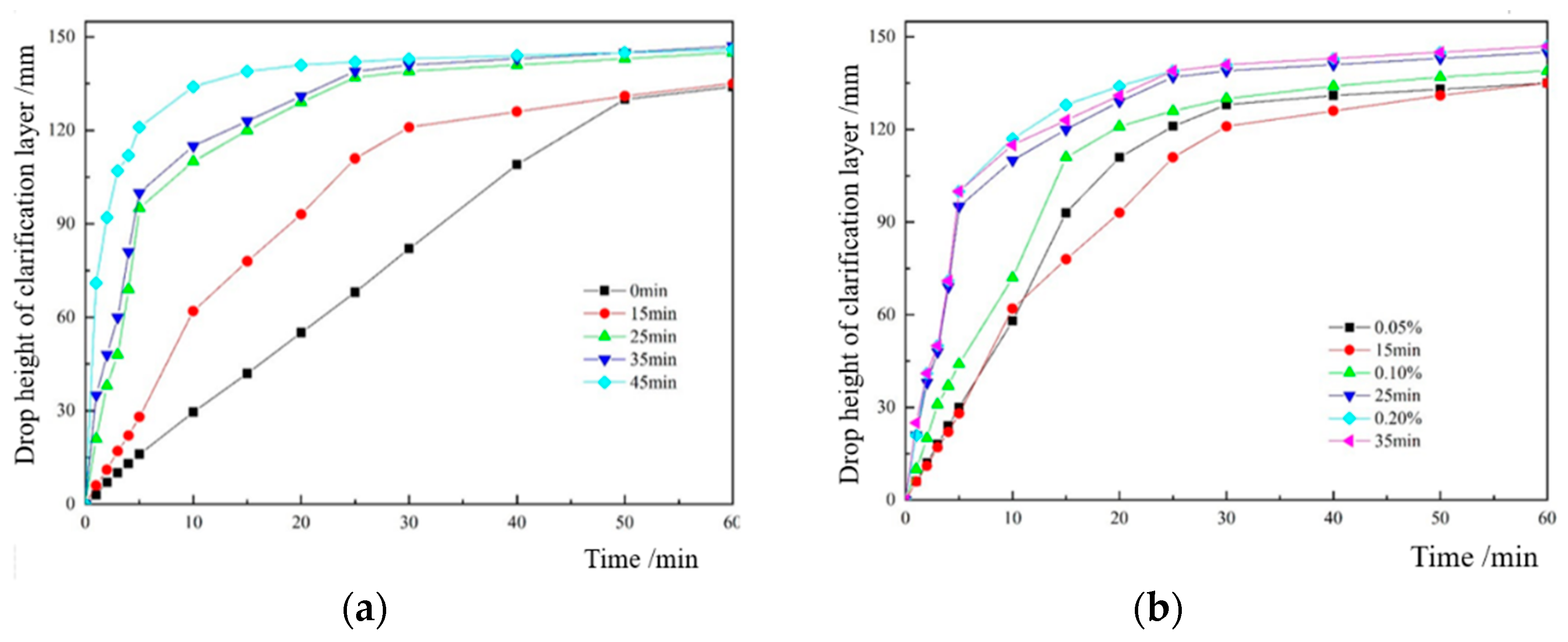
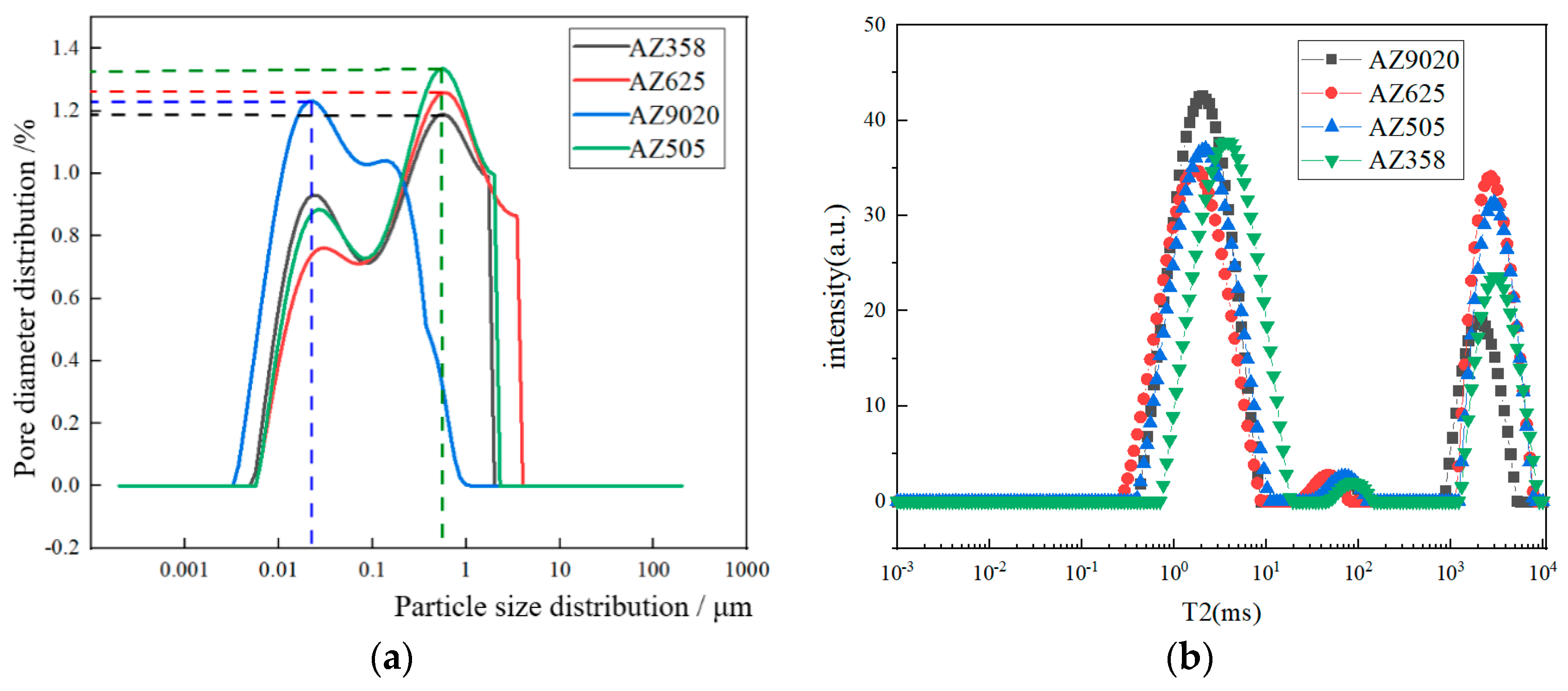
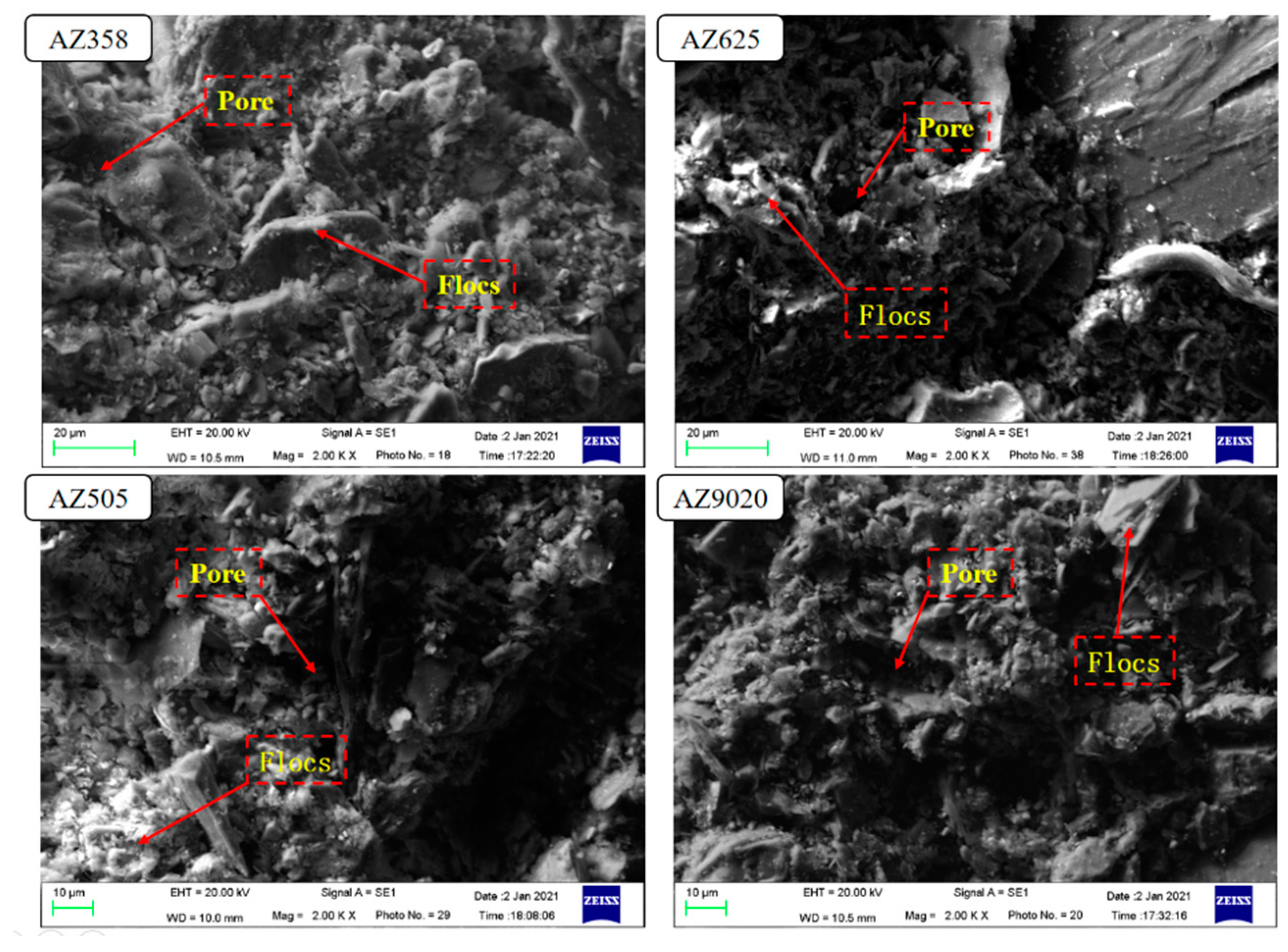
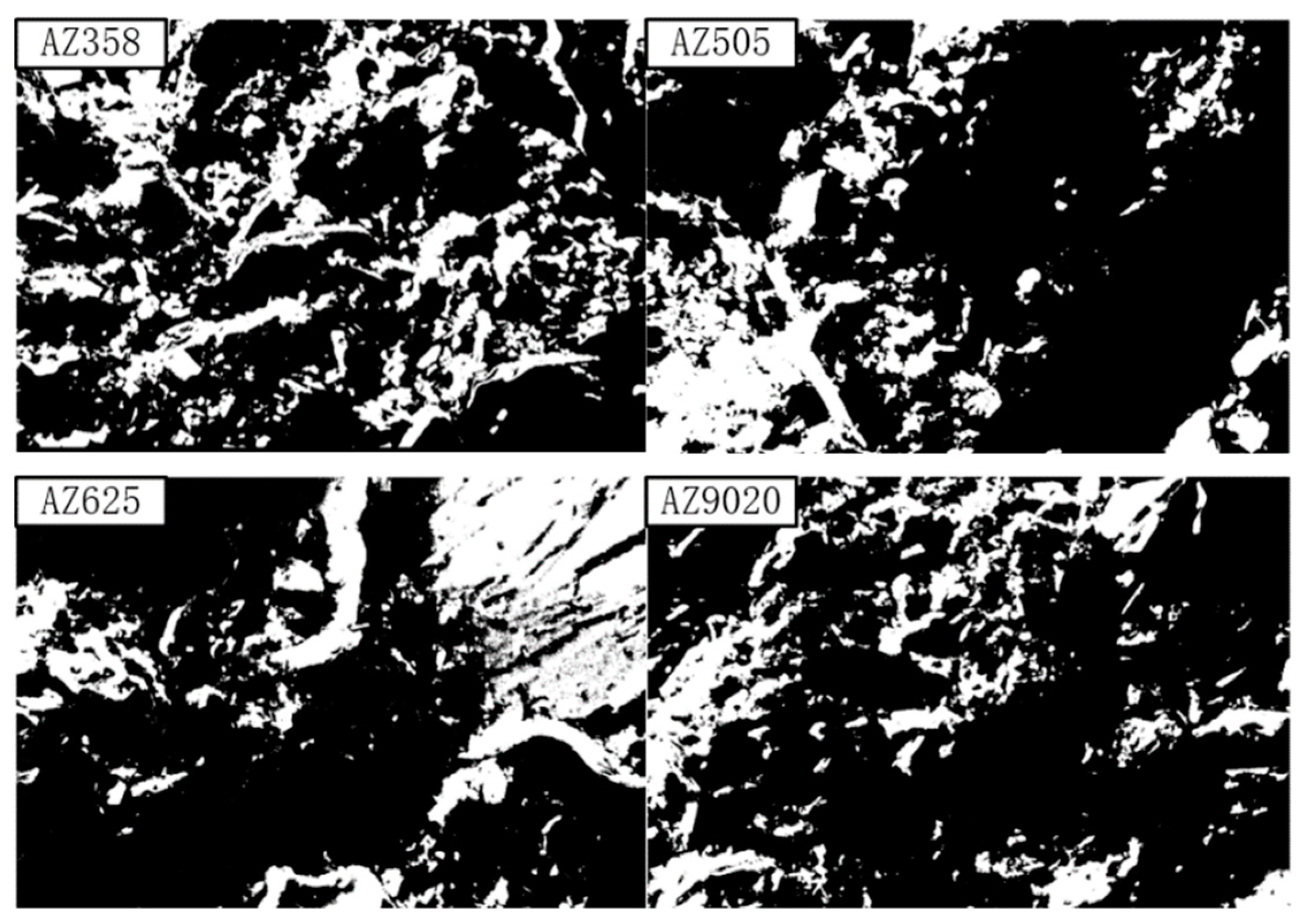
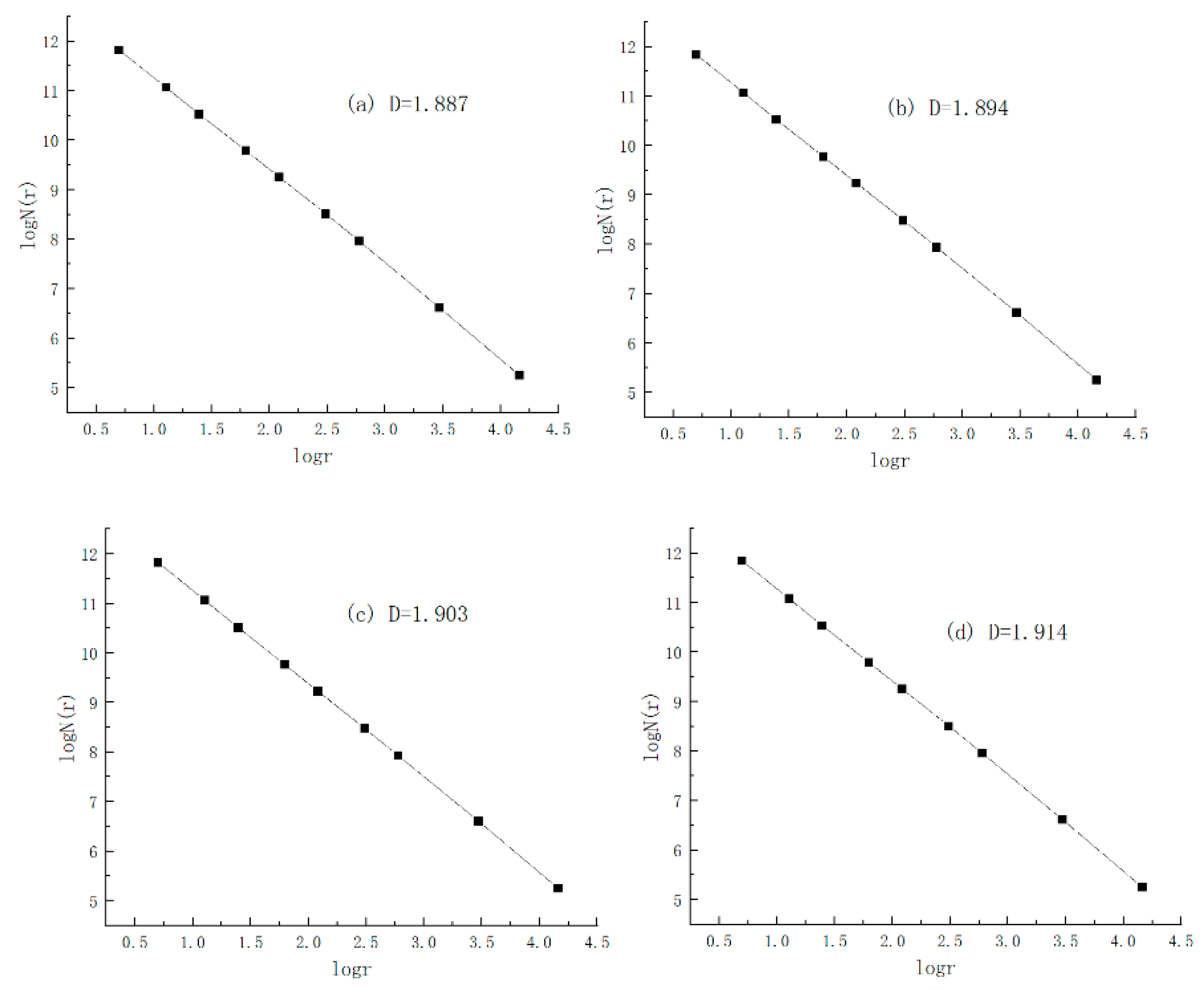

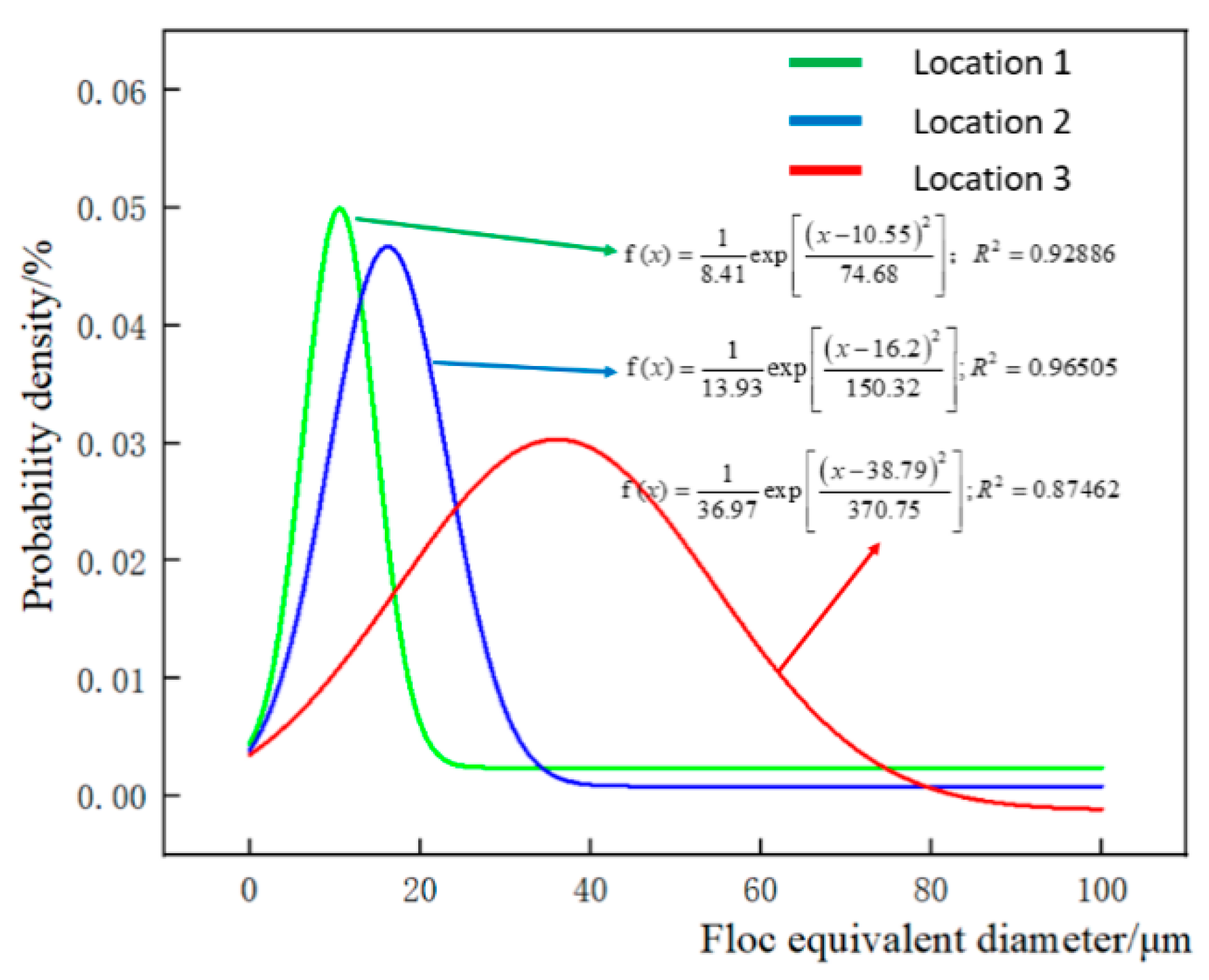


| Median Size d50/μm | Mean Diameter of Surface Area Volume D(3, 2)/μm | Sorting Coefficient/S0 | Specific Surface Area by Weight ω/m2/kg |
|---|---|---|---|
| 37.925 | 14.319 | 5.595 | 6400 |
| Component | SiO2 | TFe | SFe | CaO | FeO | Al2O3 | MgO |
|---|---|---|---|---|---|---|---|
| Content (%) | 26.30 | 20.79 | 20.02 | 12.45 | 10.90 | 6.07 | 5.55 |
| Type | Experiment Number | Exterior | Molecular Weight/10,000 | Solid Content/% |
|---|---|---|---|---|
| AZ358 anionic | L2 | White particle | 1400 | ≥95.5 |
| AZ625 anionic | L3 | White granules or powder | 1500–1600 | ≥95 |
| AZ9020 anionic | L4 | White granules or powder | 1500–1600 | ≥95.5 |
| AZ505 anionic | L5 | White granules or powder | 1600 | ≥95 |
| Experimental Steps | Experiment Code | Variable/Experiment Number | 1 | 2 | 3 | 4 | 5 | Purpose |
|---|---|---|---|---|---|---|---|---|
| 1 | L | Type | Natural setting | AZ358 | AZ625 | AZ9020 | AZ505 | Determine the best flocculant model |
| 2 | D | Unit consumption | 0 g/t | 10 g/t | 20 g/t | 30 g/t | 40 g/t | Determine the best unit consumption of the flocculant |
| 3 | N | Concentration | 0 | 0.05% | 0.1% | 0.2% | 0.3% | Determine the optimal flocculant concentration |
| 4 | T | Churning time | 10 min | 15 min | 25 min | 35 min | 45 min | Determine the best flocculant mixing time |
Publisher’s Note: MDPI stays neutral with regard to jurisdictional claims in published maps and institutional affiliations. |
© 2022 by the authors. Licensee MDPI, Basel, Switzerland. This article is an open access article distributed under the terms and conditions of the Creative Commons Attribution (CC BY) license (https://creativecommons.org/licenses/by/4.0/).
Share and Cite
Han, C.; Tan, Y.; Chu, L.; Song, W.; Yu, X. Flocculation and Settlement Characteristics of Ultrafine Tailings and Microscopic Characteristics of Flocs. Minerals 2022, 12, 221. https://doi.org/10.3390/min12020221
Han C, Tan Y, Chu L, Song W, Yu X. Flocculation and Settlement Characteristics of Ultrafine Tailings and Microscopic Characteristics of Flocs. Minerals. 2022; 12(2):221. https://doi.org/10.3390/min12020221
Chicago/Turabian StyleHan, Chongchong, Yuye Tan, Lishen Chu, Weidong Song, and Xin Yu. 2022. "Flocculation and Settlement Characteristics of Ultrafine Tailings and Microscopic Characteristics of Flocs" Minerals 12, no. 2: 221. https://doi.org/10.3390/min12020221
APA StyleHan, C., Tan, Y., Chu, L., Song, W., & Yu, X. (2022). Flocculation and Settlement Characteristics of Ultrafine Tailings and Microscopic Characteristics of Flocs. Minerals, 12(2), 221. https://doi.org/10.3390/min12020221







